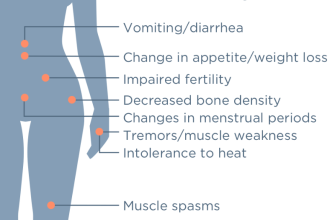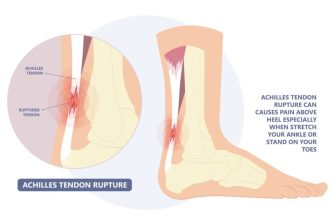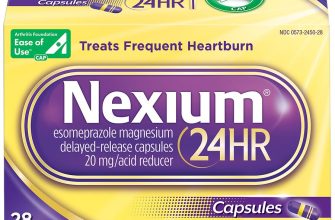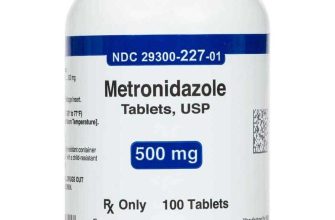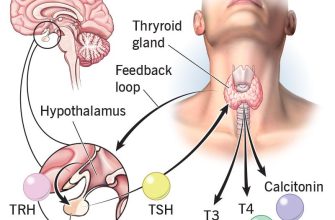Always wear gloves when handling chloramphenicol for your dog. This broad-spectrum antibiotic is highly effective against bacterial infections, but it’s crucial to protect yourself from absorption through your skin. Chloramphenicol can cause serious side effects in humans, including aplastic anemia, a potentially life-threatening blood disorder.
Administer chloramphenicol only under strict veterinary guidance. Your vet will determine the appropriate dosage and duration based on your dog’s weight, age, and the specific infection. Never attempt to self-treat your pet; incorrect dosage can lead to treatment failure or harmful consequences. Accurate measurement is key; use a calibrated measuring device provided by your veterinarian.
Observe your dog closely for any adverse reactions after administering chloramphenicol. These may include vomiting, diarrhea, loss of appetite, or unusual lethargy. Contact your vet immediately if you notice any of these symptoms. Prompt veterinary attention can be crucial in mitigating potential complications. Remember to store the medication securely and out of reach of children and other pets. Following these safety protocols ensures both your dog’s health and your own.
- Chloramphenicol for Dogs: A Veterinary Overview
- Understanding Chloramphenicol’s Use in Canine Medicine
- Why Wear Gloves When Handling Chloramphenicol?
- Potential Health Risks of Chloramphenicol Absorption
- Safe Handling Practices
- Types of Gloves
- Additional Precautions
- Proper Dosage and Administration of Chloramphenicol in Dogs
- Oral Administration
- Topical Administration
- Important Considerations
- Monitoring Your Dog
- Potential Side Effects and Risks Associated with Chloramphenicol
- Gastrointestinal Issues
- Blood Disorders
- Allergic Reactions
- Other Potential Side Effects
- Summary of Risks and Precautions
- When to Seek Immediate Veterinary Attention
- Signs Requiring Urgent Veterinary Care
- Safe Disposal and Storage of Chloramphenicol
Chloramphenicol for Dogs: A Veterinary Overview
Chloramphenicol is a broad-spectrum antibiotic, effective against a range of bacterial infections in dogs. However, its use requires careful consideration due to potential side effects.
Dosage: Your veterinarian will determine the appropriate dosage based on your dog’s weight and the specific infection. Never administer chloramphenicol without veterinary guidance. Incorrect dosage can harm your pet.
Administration: Chloramphenicol is usually given orally, often in tablet or capsule form. Some formulations may be available as an injectable solution, administered only by a veterinarian.
Side Effects: While generally effective, chloramphenicol can cause side effects, including gastrointestinal upset (vomiting, diarrhea), bone marrow suppression (potentially leading to anemia), and allergic reactions. Regular blood tests may be necessary to monitor blood cell counts.
Contraindications: Avoid chloramphenicol in pregnant or nursing dogs, as it can cross the placental barrier and enter breast milk. It should also be avoided in animals with pre-existing bone marrow disorders.
Alternatives: Many alternative antibiotics offer similar efficacy with fewer side effects. Your veterinarian can explore safer options tailored to your dog’s needs and the specific bacterial infection.
Monitoring: Closely monitor your dog for any unusual symptoms during treatment. Report any changes in appetite, behavior, or stool consistency to your veterinarian immediately. This proactive approach ensures early detection and management of potential problems.
Disclaimer: This information provides a general overview and should not replace professional veterinary advice. Always consult with your veterinarian before administering any medication to your dog.
Understanding Chloramphenicol’s Use in Canine Medicine
Chloramphenicol treats bacterial infections in dogs, but its use requires careful consideration due to potential side effects.
Veterinarians prescribe it mainly for severe infections unresponsive to safer antibiotics. Common targets include:
- Respiratory infections
- Urinary tract infections
- Gastrointestinal infections
- Skin infections
Always follow your vet’s dosage instructions precisely. Incorrect usage can harm your pet. Typical administration methods include oral tablets or injectable solutions, depending on the severity of the infection and your dog’s condition.
Observe your dog closely for adverse effects. These can include:
- Vomiting
- Diarrhea
- Loss of appetite
- Lethargy
- Anemia (rare but serious)
- Bone marrow suppression (a serious risk)
Report any of these symptoms immediately to your veterinarian. Regular blood tests monitor for potential side effects, especially anemia and bone marrow suppression. Your vet will balance the benefits against the risks when prescribing chloramphenicol.
Remember: Chloramphenicol is a powerful antibiotic, reserved for situations where other drugs fail. Never administer it without veterinary guidance.
- Consult your veterinarian before giving your dog any medication.
- Strictly follow prescribed dosage and administration instructions.
- Monitor your dog for side effects and report any concerns promptly to your vet.
- Understand the potential risks before using chloramphenicol.
Why Wear Gloves When Handling Chloramphenicol?
Always wear gloves when handling chloramphenicol to protect yourself from absorption through your skin. Chloramphenicol is readily absorbed through the skin, and direct contact can lead to unwanted side effects.
Potential Health Risks of Chloramphenicol Absorption
- Bone marrow suppression: This is a serious side effect that can lead to decreased blood cell production.
- Aplastic anemia: A rare but life-threatening condition characterized by a deficiency of all types of blood cells.
- Allergic reactions: Skin rashes, itching, and other allergic reactions can occur.
The severity of these effects varies depending on the amount of chloramphenicol absorbed and individual sensitivity. Minimizing skin contact is key.
Safe Handling Practices
- Always use gloves made of nitrile or other suitable material that provides a good barrier.
- Wash your hands thoroughly with soap and water after removing gloves, even if you didn’t experience direct skin contact with the medication.
- Avoid touching your face or eyes while handling chloramphenicol.
- Dispose of used gloves properly according to local regulations.
Types of Gloves
Nitrile gloves are generally recommended due to their resistance to chemicals. However, always check the glove manufacturer’s specifications to ensure they are suitable for use with chloramphenicol.
Additional Precautions
- Wear protective eyewear to prevent accidental eye contact.
- Work in a well-ventilated area to reduce inhalation exposure.
- Consult a veterinarian or pharmacist if you experience any adverse effects after handling chloramphenicol.
Following these guidelines significantly reduces the risk of exposure and potential health problems.
Proper Dosage and Administration of Chloramphenicol in Dogs
Always consult your veterinarian before administering chloramphenicol to your dog. Dosage depends heavily on the dog’s weight, the specific infection, and the severity of the illness. Your vet will determine the appropriate dose and duration of treatment.
Oral Administration
Chloramphenicol is typically given orally, often suspended in a liquid or mixed with food to improve palatability. Follow your vet’s instructions precisely regarding the amount and frequency of administration. Accurate measurement is crucial; use a calibrated measuring device.
Topical Administration
In some cases, your veterinarian may prescribe a topical chloramphenicol preparation for localized skin infections. Apply the medication as directed, ensuring thorough cleaning of the affected area before application. Avoid contact with eyes or mucous membranes.
Important Considerations
Never exceed the prescribed dosage. Overdosing can lead to serious side effects. Monitor your dog closely for any adverse reactions, such as vomiting, diarrhea, anorexia, or changes in blood cell counts. Report any unusual symptoms to your vet immediately. Chloramphenicol can interact with other medications; inform your veterinarian of all medications your dog is currently taking. Store the medication properly, following the instructions on the label. Remember, this information is for educational purposes only and should not replace professional veterinary advice.
Monitoring Your Dog
Regular veterinary check-ups are vital throughout the treatment. Blood tests may be necessary to monitor blood cell counts and assess the medication’s effectiveness. Your veterinarian will adjust the treatment plan as needed based on your dog’s response.
Potential Side Effects and Risks Associated with Chloramphenicol
Always wear gloves when handling chloramphenicol, a broad-spectrum antibiotic. Direct skin contact should be avoided.
Gastrointestinal Issues
Chloramphenicol can upset your dog’s stomach. Expect potential vomiting and diarrhea. Monitor your pet closely for these symptoms. If they become severe, consult your veterinarian immediately.
Blood Disorders
A serious concern is the potential for blood disorders. Chloramphenicol can suppress bone marrow function, leading to anemia, thrombocytopenia (low platelet count), and leukopenia (low white blood cell count). These conditions weaken the immune system and increase the risk of bleeding and infection. Regular blood tests can monitor for these complications.
Allergic Reactions
Like any medication, allergic reactions are possible. Watch for hives, itching, swelling, or difficulty breathing. If an allergic reaction occurs, stop treatment and seek veterinary attention.
Other Potential Side Effects
Less common side effects include loss of appetite, jaundice (yellowing of the skin and whites of the eyes), and gray baby syndrome (in newborns only). These require prompt veterinary assessment.
Summary of Risks and Precautions
| Risk | Symptoms | Action |
|---|---|---|
| Gastrointestinal upset | Vomiting, diarrhea | Monitor; consult vet if severe |
| Blood disorders | Anemia, bleeding, fatigue | Regular blood tests; immediate veterinary attention |
| Allergic reaction | Hives, swelling, breathing difficulty | Stop treatment; immediate veterinary attention |
| Other effects | Loss of appetite, jaundice | Consult veterinarian |
Remember, this information is for educational purposes only and does not substitute professional veterinary advice. Always follow your vet’s instructions carefully.
When to Seek Immediate Veterinary Attention
If your dog shows signs of a severe allergic reaction after chloramphenicol administration, contact your vet immediately. This includes difficulty breathing, swelling of the face or throat, hives, or vomiting.
Signs Requiring Urgent Veterinary Care
Seek immediate veterinary attention if you observe any of the following: Lethargy combined with loss of appetite, persistent vomiting or diarrhea (lasting more than 12 hours), unusual bleeding or bruising, pale gums, jaundice (yellowing of the skin or eyes), or seizures. These symptoms could indicate serious complications.
Always monitor your dog closely for any unusual behavior or changes in health following chloramphenicol treatment. Report any concerns to your veterinarian without delay. Early intervention can significantly improve your dog’s chances of recovery.
Safe Disposal and Storage of Chloramphenicol
Always wear gloves when handling chloramphenicol. Never flush unused medication down the toilet or drain.
Contact your veterinarian or local waste disposal service for instructions on proper disposal. They can provide guidance on safe disposal programs or methods specific to your area.
Store chloramphenicol in its original container, tightly closed, in a cool, dry place, away from children and pets. Keep it out of direct sunlight. Check the expiration date regularly and discard expired medication according to your vet’s or waste disposal service’s advice.
Follow the specific storage instructions on the product label. This ensures the medication maintains its potency and safety.
Report any accidental ingestion or exposure to chloramphenicol to your veterinarian or a poison control center immediately.


